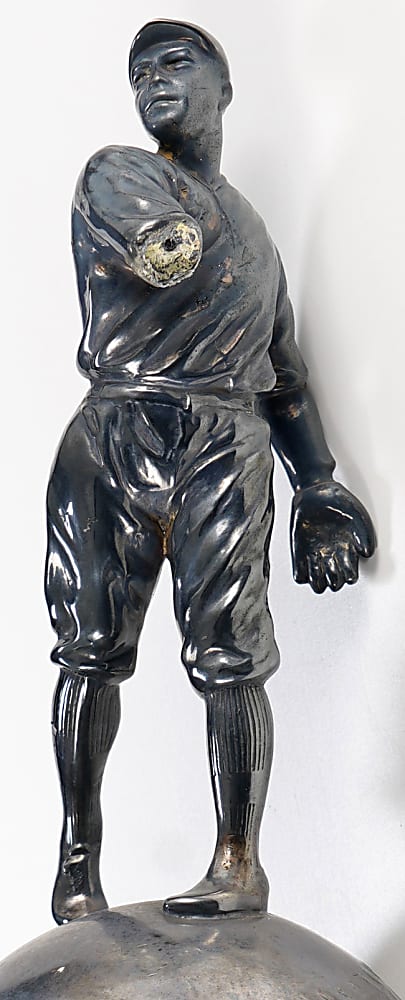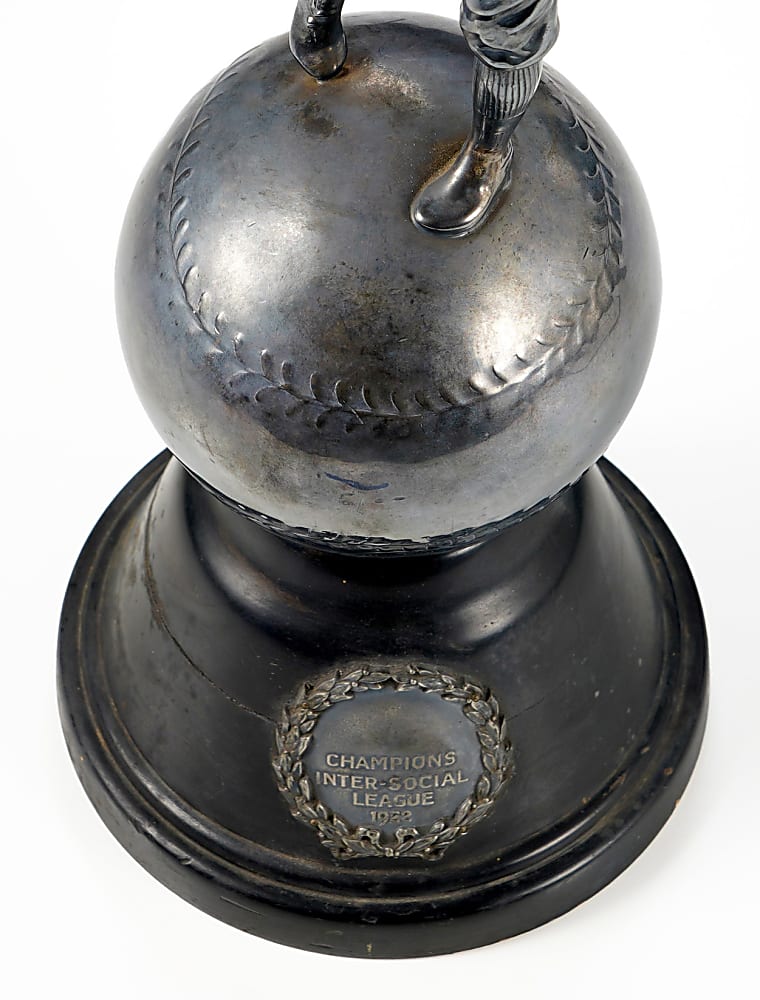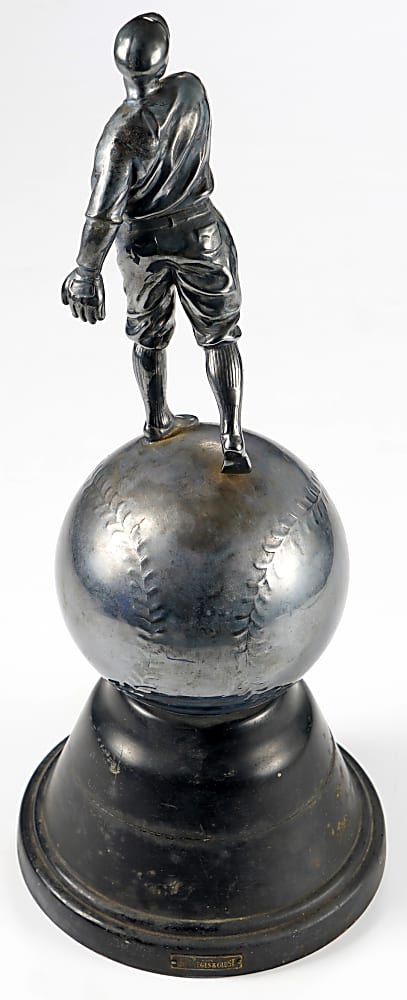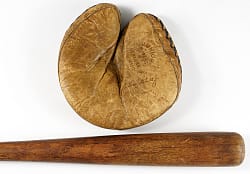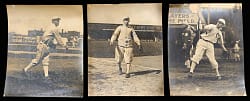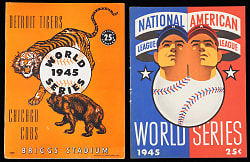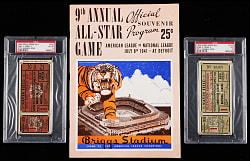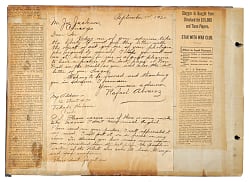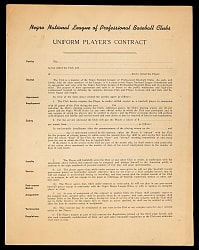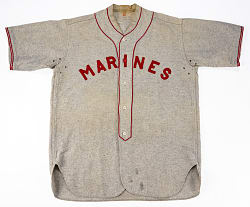Lot # 1015: 1922 Spalding Tampa Inter-Social League Champions Silver-Plated Trophy Made by Dieges & Clust
Starting Bid:
$250
Bids:
(Bid History)
Current Bid
| Next Bid | $ |
| Buyer's Premium | $ |
| Sales Tax (estimated) | $ |
| Shipping Fee (estimated) | $ |
| Total Cost | $ * |
* Shipping and sales tax calculations are 'best guess' estimates based on your current shipping address. Final calculations may vary at billing.
Description
Discover an historic treasure, with the viewing of this 1922 Spalding Tampa Inter-Social League Champions silver-plated trophy. Famous maker Dieges & Clust crafted this antique figural piece, as part of its collector favorite line known as "The Five Figural Spalding Baseball Trophies". Despite the loss of the right arm from the sleeve down, this century-old award remains very impressive. Modeled on a “dead ball” era hurler reminiscent of Christy Mathewson, this majestic trophy reaches a height of nearly 20”, on a wood pedestal base with an 8” diameter. Stacked between the wood base and the pitcher figure is a super-sized metal baseball, adorned with a Spalding logo, just above the junction with the base. A Dieges & Clust logo plate is affixed to the back of the base, readily identifying the maker. Located on the front of the base, is a metal plate ringed with an olive branch wreath and engraved with “Champions Inter-Social League 1922”. The pitcher and baseball bear considerable toning, but are otherwise very appealing, and the painted black wood base shows moderate wear, commensurate with its considerable age.
Florida has long been a hotbed for Spring Training, but once the MLB teams headed north, it was local teams that fans turned to for their diamond diversions. Founded at the dawn of the 20th Century, the Inter-Social League was a regional affiliation located in the Tampa, Florida area. Passionate Cubans settled in Tampa’s Ybor City and were a big part of the cigar business the area is well-known for. These Cubans and other ethnic groups manned the Inter-Social League teams, more for their love of the game and local bragging rights, than for financial gain. Beyond the field, these social clubs were ingrained in the local culture, serving the community in many ways. The participating squads in the 1922 Inter-Social League championship series are reported as Círculo Cubano (Cuban Circle in English) and Centro Español (Spanish Center), though the winner is a mystery. An exciting survivor from a bygone era, this antique trophy stands as a reminder of the civic pride, strong community ties and dedication to the great game of baseball displayed by hard-working immigrants, who did their part in making America a great nation.
Below is a list of the teams that participated in 1922 Inter-Social League games:
Centro Asturiano de Tampa
Founded in 1902 by 546 immigrants from Asturias, Spain, the Centro Asturiano was originally an extension of its namesake organization in Havana. Serving the Spanish community, it provided essential social and medical services, later even founding a hospital (Sanatorio del Centro Asturiano). The club became a powerful force in both community welfare and amateur sports.
Sicilian Club (La Sicilia)
Established in 1916, the Sicilian Club served the growing population of Sicilian immigrants in West Tampa. Located at the corner of Howard and Spruce Street, the club included a theatre and served as a vital cultural and social hub for the community. Its baseball team reflected the pride and competitive spirit of Tampa’s Italian-American population, helping to knit the community together through sport.
Círculo Cubano (Cuban Club)
Formed in 1902, the Círculo Cubano was a direct descendant of El Club Nacional Cubano (founded in 1899). By the 1910s, it boasted over 2,600 members. A fire destroyed its original clubhouse in 1916, but the rebuilt Cuban Club became an iconic institution. With a gymnasium and boxing ring, it was also a champion of athletics. Its baseball team, made up of young Cuban men, was one of the league’s strongest and most passionate.
Centro Español de Tampa
Founded in 1891, Centro Español was the first mutual aid society in Ybor City, created by Spanish immigrants (many of whom came via Cuba). It served as the model for later ethnic clubs and played a major role in immigrant life, offering education, health care, social events, and community support. In 1904, it built its own hospital, the Sanatorio del Centro Español, considered one of Florida’s best medical facilities at the time.
The size/weight of this item requires that there will be an additional shipping charge for this lot.

